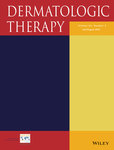Trichoscopy as a monitoring tool in assessing treatment response in 98 children with tinea capitis: A prospective clinical study
Abstract
Tinea capitis (TC) is the most common dermatophyte infection in children. Fungal culture the gold standard diagnostic method takes several weeks and has poor yields. Trichoscopy helps in rapid diagnosis and could work as a monitoring tool during antifungal therapy. Our main objective is to document the evolution of trichoscopic features with treatment and their correlation with clinical parameters in patients of TC. Forty-six and 52 children with clinically diagnosed TC that was confirmed by potassium hydroxide microscopy, received griseofulvin and terbinafine, respectively. Recruited children were subjected to clinical and trichoscopic assessment by calculation of CASS (clinical assessment severity score) and counting of TAHC (Total Altered hair count; negative and positive), respectively, at baseline and follow-up at 2, 4, and 6 weeks. McNemar, Wilcoxon singed ranked test and Spearman-rho correlation of various parameters was evaluated. Follow-up trichoscopy revealed significant (p < 0.009) disappearance of negative TAHC like black dot (second week onward), corkscrew, horseshoe and zigzag hair at 4 weeks and short broken hair, erythema telangiectasia hemorrhage (ETH) resolved at 6 weeks. Positive TAHC (regrowing hair) shows significant increase at 6 weeks (p < 0.001). CASS and negative TAHC showed significant difference at 4 weeks (p < 0.001) by analyzing boxplot graph. Therefore, trichoscopic resolution occurred before the clinical cure. Terbinafine subjects showed a higher clinical cure rate at 4 weeks (p = 0.02) as compared to griseofulvin. To conclude, trichoscopy is a good monitoring tool that could document the disappearance of almost all dystrophic hair at 4 to 6 weeks and is a more sensitive tool than microscopic examination. Regrowing hair and perifollicular scaling are markers of recovery.
CONFLICT OF INTEREST
The author declares that there is no conflict of interest that could be perceived as prejudicing the impartiality of the research reported.
Open Research
DATA AVAILABILITY STATEMENT
The data that support the findings of this study are available from the corresponding author upon reasonable request.




